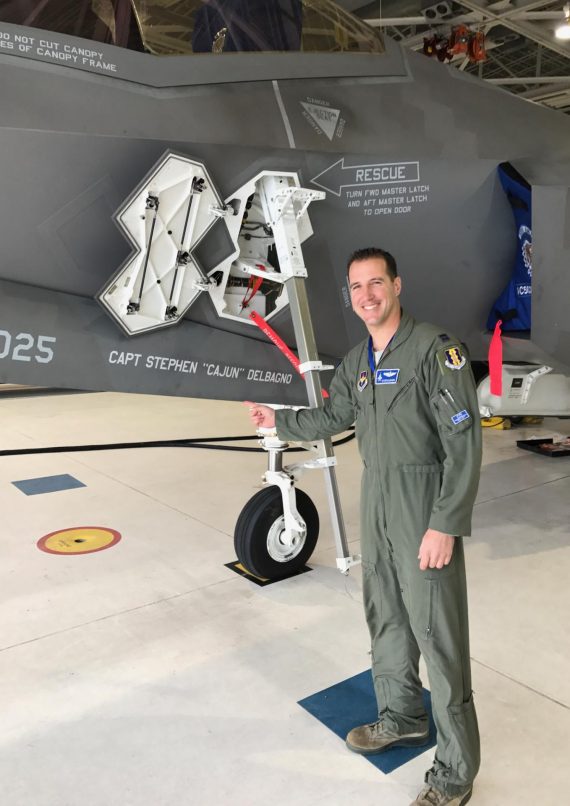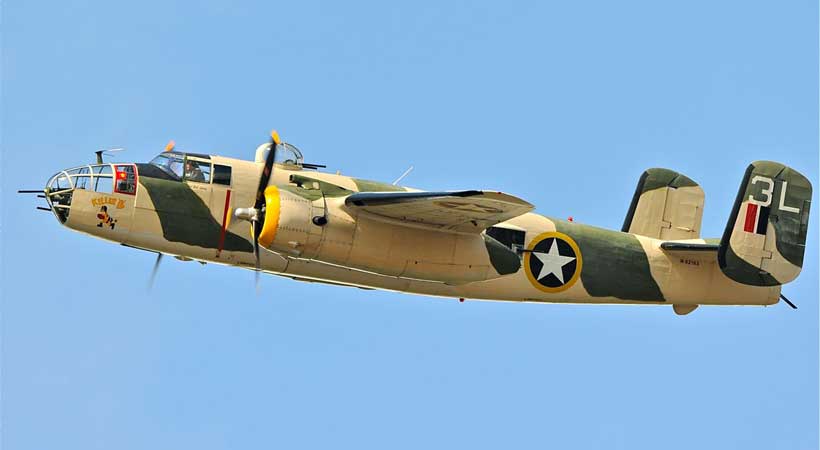The North American B-25 Mitchell is a medium bomber that was introduced in 1941 and named in honor of Major General William “Billy” Mitchell, a pioneer of U.S. military aviation. Used by many Allied air forces, the B-25 served in every theater of World War II, and after the war ended, many remained in service, operating across four decades. Produced in numerous variants, nearly 10,000 B-25s were built. These included a few limited models such as the F-10 reconnaissance aircraft, the AT-24 crew trainers, and the United States Marine Corps’ PBJ-1 patrol bomber.
The Air Corps issued a specification for a medium bomber in March 1939 that was capable of carrying a payload of 2,400 lb (1,100 kg) over 1,200 mi (1,900 km) at 300 mph (480 km/h) North American Aviation used its NA-40B design to develop the NA-62, which competed for the medium bomber contract. No YB-25 was available for prototype service tests. In September 1939, the Air Corps ordered the NA-62 into production as the B-25, along with the other new Air Corps medium bomber, the Martin B-26 Marauder “off the drawing board”.
Early into B-25 production, NAA incorporated a significant redesign to the wing dihedral. The first nine aircraft had a constant-dihedral, meaning the wing had a consistent, upward angle from the fuselage to the wingtip. This design caused stability problems. “Flattening” the outer wing panels by giving them a slight anhedral angle just outboard of the engine nacelles nullified the problem, and gave the B-25 its gull wing configuration. Less noticeable changes during this period included an increase in the size of the tail fins and a decrease in their inward tilt at their tops.
NAA continued design and development in 1940 and 1941. Both the B-25A and B-25B series entered USAAF service. The B-25B was operational in 1942. Combat requirements led to further developments. Before the year was over, NAA was producing the B-25C and B-25D series at different plants. Also in 1942, the manufacturer began design work on the cannon-armed B-25G series. The NA-100 of 1943 and 1944 was an interim armament development at the Kansas City complex known as the B-25D2. Similar armament upgrades by U.S-based commercial modification centers involved about half of the B-25G series. Further development led to the B-25H, B-25J, and B-25J2. The gunship design concept dates to late 1942 and NAA sent a field technical representative to the SWPA. The factory-produced B-25G entered production during the NA-96 order followed by the redesigned B-25H gunship. The B-25J reverted to the bomber role, but it, too, could be outfitted as a strafer.
NAA manufactured the greatest number of aircraft in World War II, the first time a company had produced trainers, bombers, and fighters simultaneously (the AT-6/SNJ Texan/Harvard, B-25 Mitchell, and the P-51 Mustang). It produced B-25s at both its Inglewood main plant and an additional 6,608 aircraft at its Kansas City, Kansas, plant at Fairfax Airport.
After the war, the USAF placed a contract for the TB-25L trainer in 1952. This was a modification program by Hayes of Birmingham, Alabama. Its primary role was reciprocating engine pilot training.
A development of the B-25 was the North American XB-28, designed as a high-altitude bomber. Two prototypes were built with the second prototype, the XB-28A, evaluated as a photo-reconnaissance platform, but the aircraft did not enter production.
 AirDotShow partners with the National Air, Sea and Space Foundation to give back through hosting STEM Education Programs to inspire the next generation to pursue careers in aerospace. AirDotShow also support the NASSF’s Cajun Scholarship founded to honor fallen Thunderbird pilot Stephen “Cajun” Del Bagno
AirDotShow partners with the National Air, Sea and Space Foundation to give back through hosting STEM Education Programs to inspire the next generation to pursue careers in aerospace. AirDotShow also support the NASSF’s Cajun Scholarship founded to honor fallen Thunderbird pilot Stephen “Cajun” Del Bagno

